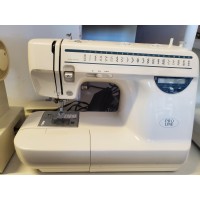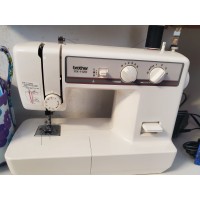Glossary
Glossary
of Sewing Terms
Arm Scye: The armhole of a garment, where the
sleeve is attached
Basting: Temporary stitches to keep the garment
together for fitting. These are usually hand sewn lines of stitching, made with
a running stitch about ½" or 1.5 cm in length.
Binding: This is a narrow strip of fabric or tape
used to cover the raw edges of a garment. It can be on the inside where it
won’t be seen, or on the outside to show as decoration. For many hidden uses,
BIAS BINDING will be asked for.
Bias: If something is cut on the true bias, it is cut at 45
degrees to the selvage. Bias cut garments were very popular in the 1930’s. They
drape beautifully, and cling to the figure more than straight cut garments.
Bias Binding: A binding strip cut on the bias. You
can buy it ready cut, or cut it from the fabric you are using to make a ‘self’
bias binding.
Blind Hemming: Hemming stitches that cannot be seen from
the outside of the garment.
Border Print: These patterns are printed with the
pattern along one edge, and a narrow strip down the side for hems. Sari fabric
frequently has a border print. They are often used for skirts.
Bust Point The point on the pattern where the point
of the bust should fall.
Calico: a closely woven cotton fabric that is
used for many construction and craft things. It is a natural cream cotton color,
and frequently has cottonseed husk still in it. It comes in a variety of
different weights. One common use is for covering upholstered furniture that
will have loose covers. (Americans frequently refer to printed cotton fabrics
as ‘calico’.)
Clean Finishing: Finished edges of the garment, rather
than the raw edges formed by cutting the fabric. This can be done by binding
the edges, or over sewing them by hand or machine.
Cross grain: Some thing is cut at right angles to the
grain line, across the grain. Border prints are usually cut this way.
Ease: The difference between the body measurement and the pattern.
Ease differs according to the type and style of garment. For standard ease
allowances, please look at the Ease Allowance chart.
Edge Stitching: A decorative straight stitch along the
edge of a garment. Also useful for keeping the edges of collars sharp. It is
usually about 1/16" or 1 mm from the edge of the garment.
Facing: The piece of fabric inside a garment opening
(like a sleeve or neck opening) that encloses the raw edge of the fabric. It is
frequently interfaced.
Face: The outside or ‘right’ side of a fabric, the side you see
when the garment is finished.
Face Cloth: The outside or ‘fashion’ fabric, rather
than the lining or interlining.
Grain Line: The warp direction of the fabric, up and
down the length. If something is ‘off grain’ then it is not laid out with the
grain line following that of the fabric.
Hair canvas: A lightweight springy cloth
used as an interfacing for traditional gents tailoring. It is sewn by hand to
the face cloth.
Hem: The bit you turn up at the bottom of a garment to stop it
fraying and getting tatty!
Hemming Tape: A narrow tape used to strengthen hems in
tailored trousers. It is sewn on to the hem on the outside of the turned up hem
inside the garment after the hem has been turned up.
Hip Point: The point on the pattern where the hip
comes.
Horsehair Braid: A loosely woven braid mainly for
stiffening hems. It comes in several weights, and used to be made of horde
hair. Now more commonly made of nylon or polyester.
Interfacing: A special fabric sewn in between the
layers of a garment to help it hold its structure. Interfacing comes in many
different types, suitable for many different fabrics. For a fuller explanation
of the different types and their uses, look at the Interfacing Chart.
Interfacing comes in two sorts: sew in, which you sew into place, and fusible,
which you iron on.
Interlining: A fabric that comes between the face
cloth and the lining, usually used for warmth or to add substance to a lightweight
fabric. A good example is the insulating layer in a padded or quilted jacket.
Jumper: 1) In the UK this means a Jersey or pullover. In the US it
means a pinafore dress.2) A small plastic device for ‘jumping’ over lumpy seams
with the sewing machine. Also known as a Hump Jumper or Jean-A-Ma-Jig. Something,
which does the same job, may also be sold as a button reed. Very useful when
sewing up the hems of your jeans!
Lining: This is a lighter weight fabric that goes inside a garment
like a jacket or coat. It helps you to put the garment on easily as it is
usually shinier than the top fabric. A lining may match or contrast with the
garment, and can be made of almost anything. Linings can help to eliminate a
see through effect on a lightweight dress fabric too. The lining also helps a
garment to last longer. Linings should be chosen to complement the fashion
fabric.
Loom State: As the fabric comes off the loom, before
it has undergone any finishing, dying or printing process. Loom state cloth
will shrink, and will need treatment before use.
Muslin: 1) a lightweight loose weave cotton fabric akin to cheesecloth.
It is absorbent, and makes good pressing cloths.2) the American term for a toile
(see below)
Mounting: The process of using two fabrics as one:
You cut out the face cloth and the mount as one and sew all processes with them
together. It can give solidity to sheer fabrics and weight to light fabrics.
Notches: Diamond shaped marks that stick out
beyond the edge of the pattern, to help you to line up all the pattern pieces
when you sew the garment. They come in pairs to be matched up.
Pin: A small sharp thing for holding garments together
temporarily, and for holding patterns to fabric for cutting out. If you are
told to pin something together, then place the pins so that they go in and out
of the face of the fabric, thus: 0- --
Pressing: The art of pressing is different from
the art of ironing, Most importantly, one usually uses a dampened pressing
cloth rather than steam, and the iron is picked up off the cloth and moved,
rather than rubbed back and forth.
Raw Edge: The cut edge of a piece of garment. It
may fray or unravel if left in this state.
Rise: The distance from hip to waist: sit on a table and cross one
leg over the other. Measure from the waist down to the table on the upper leg
side. This is your rise measurement.
Seam Allowance: The little bit of fabric between the cut
edge of the garment and the seam line. Frequently this is 5/8" or 1.5cm
Seam Line: The line on which to sew when putting a
garment together. It is the seam line, which must be matched when putting the
garment together, not the raw edge.
Straight Grain: This is what the grain line follows: the
warp threads.
Selvage: The woven edge of the fabric, where the
weft threads bend round to go in the other direction.
Slash: A cut opening in the garment. It can be for a pocket, to
insert something like a contrasting piping, or for an opening to allow you to
put the garment on.
Shoulder pads: These are shaped pads of felt or foam,
put in the shoulders of garments to give them shape. They are frequently used
in tailored garments like jackets and coats. They come pre formed in many
shapes and sizes, or you can make your own.
Stabilizers: These fabrics are a bit like
interfacing, but are usually temporary, being largely removed after the process
requiring them is complete. They are used to stabilize a fabric for such things
as machine embroidery and buttonhole sewing. They prevent the fabric from
stretching and distorting while the process is carried out. Modern stabilizers
include polythene like sheets that dissolve away when dampened, very stiff self-adhesive
stuff that can be peeled away for embroidering areas too small for a hoop, and
spray on stuff that vanishes when washed or steam ironed.
Stay Stitching: a line of stitching put in only just
inside the seam line to prevent an area of the garment stretching or distorting
before it can be assembled. Common round sleeve and armholes, and at the apex
of sharp corners and slashes.
Tacking: The same as basting: temporary stitches
that are removed after sewing, or to hold something in place during
construction. They are usually removed before the garment is worn; tough some
may end up hidden inside the garment and may not need to be removed.
Tailor’s Tacks: Temporary thread marks for matching
points or to mark where things are to be placed. They are removed after use.
Toile: This is a garment made from cheap fabric, used to ‘prove’ a
pattern: you make this version up to ensure that the pattern fits: any
alterations can be transferred to the pattern before cutting out the real
version. It is usually only done with expensive garments and fabrics that would
mark, like silk wedding dresses. The American term is ‘muslin’.
Top Stitching: A decorative stitch like edge stitching,
but further from the edge of the garment. They can come in multiple rows and
look very smart.
Under Stitching: A line of stitches round the inside of a
garment that sews the seam allowances to the facing to prevent it rolling to
the outside. Usually between 1/16" and ¼" from the edge of the
garment. It does not show on the outside. There is a lesson about this on
the under stitching page.
Warp: The long threads that go on the loom, and follow the length
of the fabric. They are usually stronger than the filler threads, which is why
most garments are cut following them (i.e. on the grain).
Weft: These are the filler threads that are woven in and out of
the warp threads to form the cloth. They are not usually quite as strong as
warp threads
Woof: Another term for weft threads.
Sewing
Machine Parts & Terms
Adapters: An
adapter allows a user to interchange various types of feet without using a screwdriver
to remove the foot presently on the machine. It makes changing feet easier. It
also allows non-brand feet to be used on any brand machine. There are several varieties of adapters. To determine which to use, one would
need to know the size or description of the feet each individual machine would
use. For Example:
- Short Shank
- High Shank
- Slant Shank
- Super high
Shank
Aerosols: Various
chemicals to clean, lubricate, degrease, derust and/or polish a sewing machine,
vacuum cleaner, or other appliance.
Belts: Belts
are used to drive sewing machines, vacuums, and other appliances. Belts provide
a link between motors and driveshaft. Belts are also available for timing a
sewing machine. Each machine requires its own belts. The model umber is
necessary to order.
Bobbin Case Parts: Parts
used to replace lost or broken parts used on bobbin cases. (Example: springs,
screws, and latches) Model number and name needed to order.
Bobbin Cases: A
bobbin case holds the bobbin and usually has some mechanism to control the
tension of the thread as it pulls off the bobbin. Each machine has a specific bobbin case. The customer should match the model
number. The bobbin case may also be called a bobbin holder or bobbin shuttle.
Bobbins: The
bobbin is used to hold the bottom thread and is necessary for the machine to
sew. Every machine has a specific bobbin, based on make, model and name. The
bobbin is also known as the shuttle or the lower thread. In some cases,
prewound bobbins are available.
Bobbin Winders: Devices
that wind bobbins.
Bulbs: Provide
light to sewing bed. Bulbs come with various bases, shapes and sizes.
Buttonhole Attachments: Optional attachment for the sewing machine to measure and
sew buttonholes.
Carbon Brushes: Parts
used in an electric motor to provide contact to positive and negative poles.
Cleaners and Dusters: Various chemicals and tools used to clean and service a
sewing machine.
Control Dials - Knobs – Levers: Cosmetic parts on a sewing machine used
to adjust stitches. For example:
- Zig Zag Lever
- controls width of decorative stitches
- Stitch length
arm/dial - controls length of stitch
- Pattern
selector knob - controls selection of desired patterns.
Cords: Provides
electric power to appliance.
Cut and Sew Attachments: A cut and sew attachment is used for mock serging.
Dust Covers: Protective
covers for sewing machines.
Electrical Accessories: Parts used to provide electrical connection to sewing
machine.
(Examples include lead cords, foot controls, foot control cords, light bulbs, and
light fixtures.)
Even-feed Attachments: The even-feed attachment allows for even seams, matching
plaids, and eliminates puckering, even when several layers of fabric are being
sewn.
Feed Dogs: Part
located under the needle plate. Teeth used to move material.
Foot Control Accessories: Friction pads used under foot control to prevent it from
sliding.
Foot Control Parts: Parts used to replace lost or broken parts used on foot
controls. (Example: springs, screws, and latches)
Foot Control: A
device used with the foot to control sewing machine speed.
Gear Saver: Substance
used to lubricate gears to prevent wear.
Hand Wheel Parts: Parts
used to replace lost or broken parts used on hand wheels. (Example: springs,
screws, and latches)
Hand wheel: Wheel
located on right side of machine used to manually move needle up and down.
Hook: The
hook picks thread off the needle to create a stitch. Also called a shuttle.
Household Machine Needles: Various brands of needles available in
different systems and sizes. The most common needle used in household machines
is 15 x 1 size 11-14-16. Some machines use different system needles, so when ordering it is wise to
include brand, model number and description of material to be sewn.
Instruction Books: Books
with info on individual sewing machines. Describes threading, use of dials,
bobbin winding, etc.
Knives: Knives
are used on sergers only. They allow material to be cut to size to match the
overlock (overcast) stitch. They make clean edges. The appropriate knife can be
determined if the model number and brand are known. Knives are also known as
cutters or blades.
Lint Brushes: Small
brush used to remove lint and debris from sewing machines.
Loopers: The
appropriate looper can be determined if the model number and brand are known.
Loopers are not known by any other name.
Metal Conditioner: Chemical
used to prepare and extend life of metal parts in sewing machine.
Motors: Provides
electrical movement for sewing machines.
Motor Parts: Parts
used to replace lost or broken parts used on motors. (Example: springs, screws,
and latches) Model number and name needed to order.
Needle Clamps: Device
that holds the needle in the needle bar.
Needle Clamp Screws: Screws in the needle clamp. Holds needle in place.
Needle Clamp Gib: Small
wedge-like part that presses on needle to hold in place.
Needle Storage: Container
to store needles.
Oil/Lubricant: Liquid
oil and solid grease used to lubricate sewing machines.
Portable Case: Plastic
or leather case to transport and protect sewing machine.
Position Brackets: Parts
used to position bobbin case in sewing machines.
Position Fingers: Parts
used to position bobbin case in sewing machines.
Presser Foot: A
pressure foot holds the fabric down and steady while the fabric is stitched.
Pressure feet are used for several different purposes.
- Zig-Zag Foot
- allows space for needle to swing side-to-side to create a wide stitch.
- Hemmer Foot -
Creates a 1/8" rolled hem by rolling the edge of the fabric to be
stitched in one motion.
- Zipper Foot -
Allows a needle to be placed close to the metal teeth of the zipper.
Presser feet have various names according
to the sewers background, but are most commonly named for the purpose they
accomplish.
Ruffler: Rufflers
are used when a gathered or pleated look is the desired effect. Rufflers are
also known as pleasters or gatherers. Ruffling and pleating can be done by
hand, but it requires much patience and skill.
Screws: Screws
are mostly used to replace damaged or lost screws. The right screw is
determined by the location on the machine, etc.
Serger Feet: Serger
feet perform the same function on sergers as presser feet perform on sewing machines.
Shanks: Same
as Adaptors
Snap-matic feet: Same as presser feet, they attach by means of a snap-on
connection.
Marie's Sewing Center is proud to introduce the NEW Babylock Triumph.. The Triumph conquers serging in a way you never thought possible thanks to RevolutionAir threading. Thread the loopers with just the touch of a button and then thread the needles automatically with the touch of another button! You'll have more time to focus on your creativity than worrying about setting up your machine. The Triumph also has all the features you've come to expect from Baby Lock Sergers that make all your creative dreams a reality.


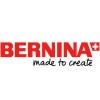
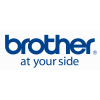
-100x100.jpg)
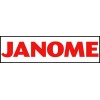
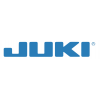


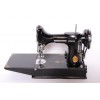
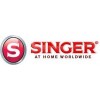
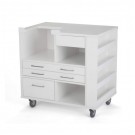
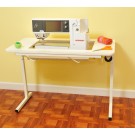
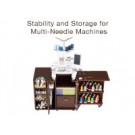
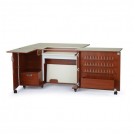







-60x60.jpg)



















